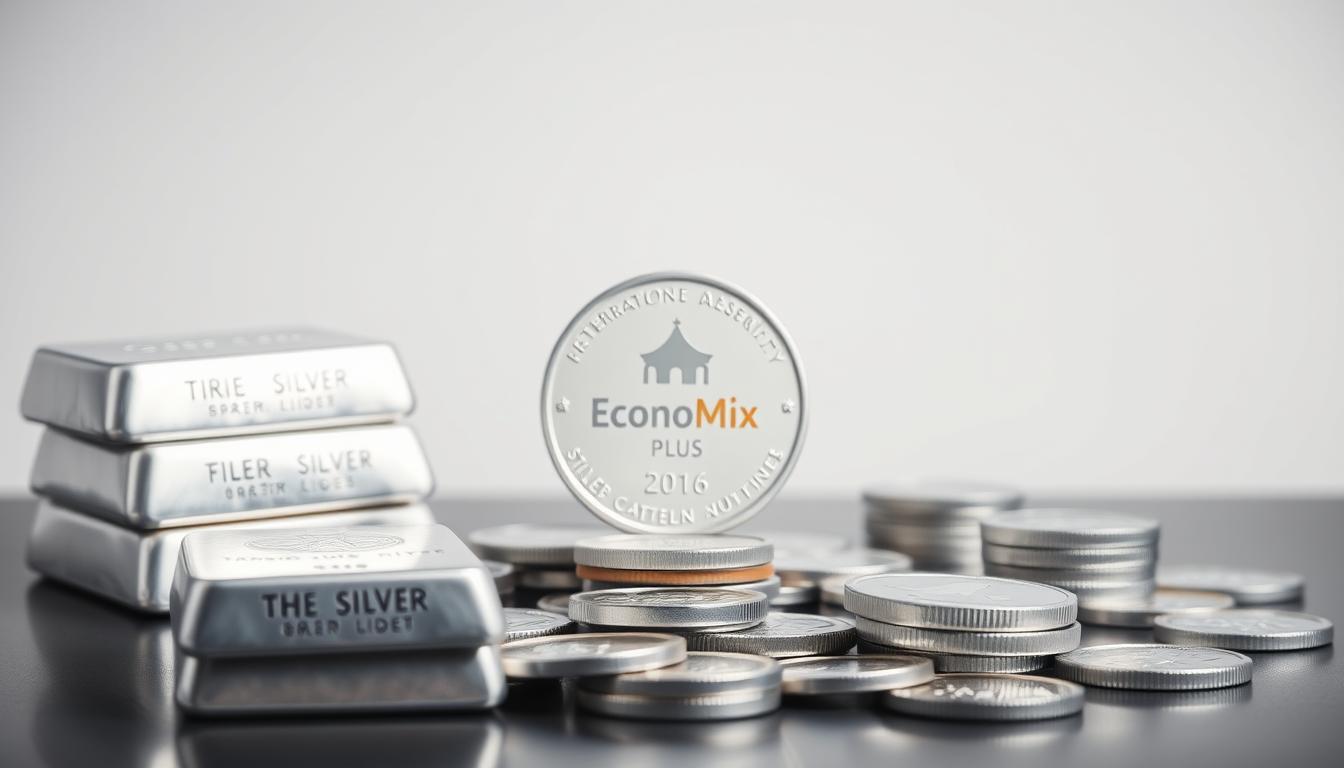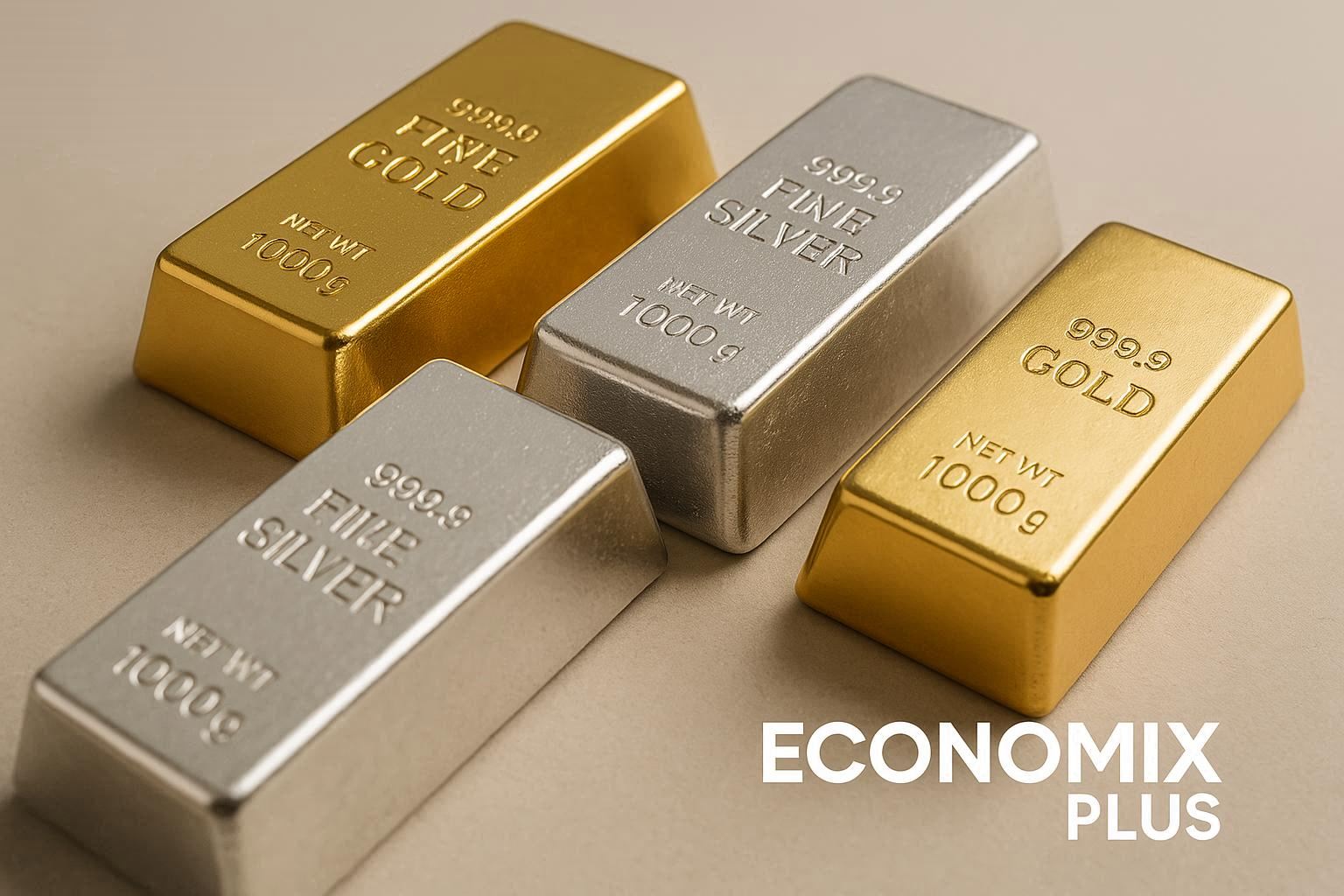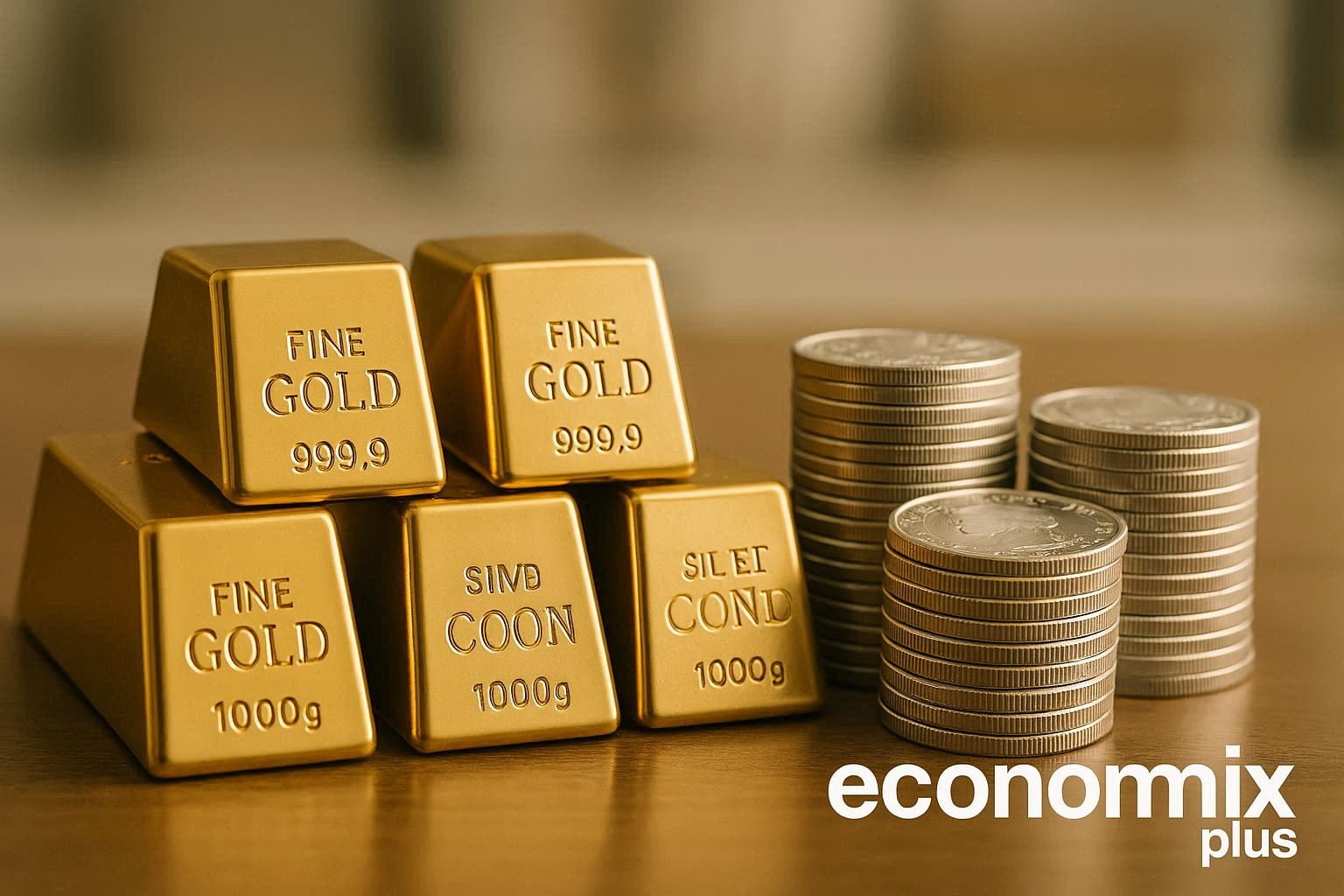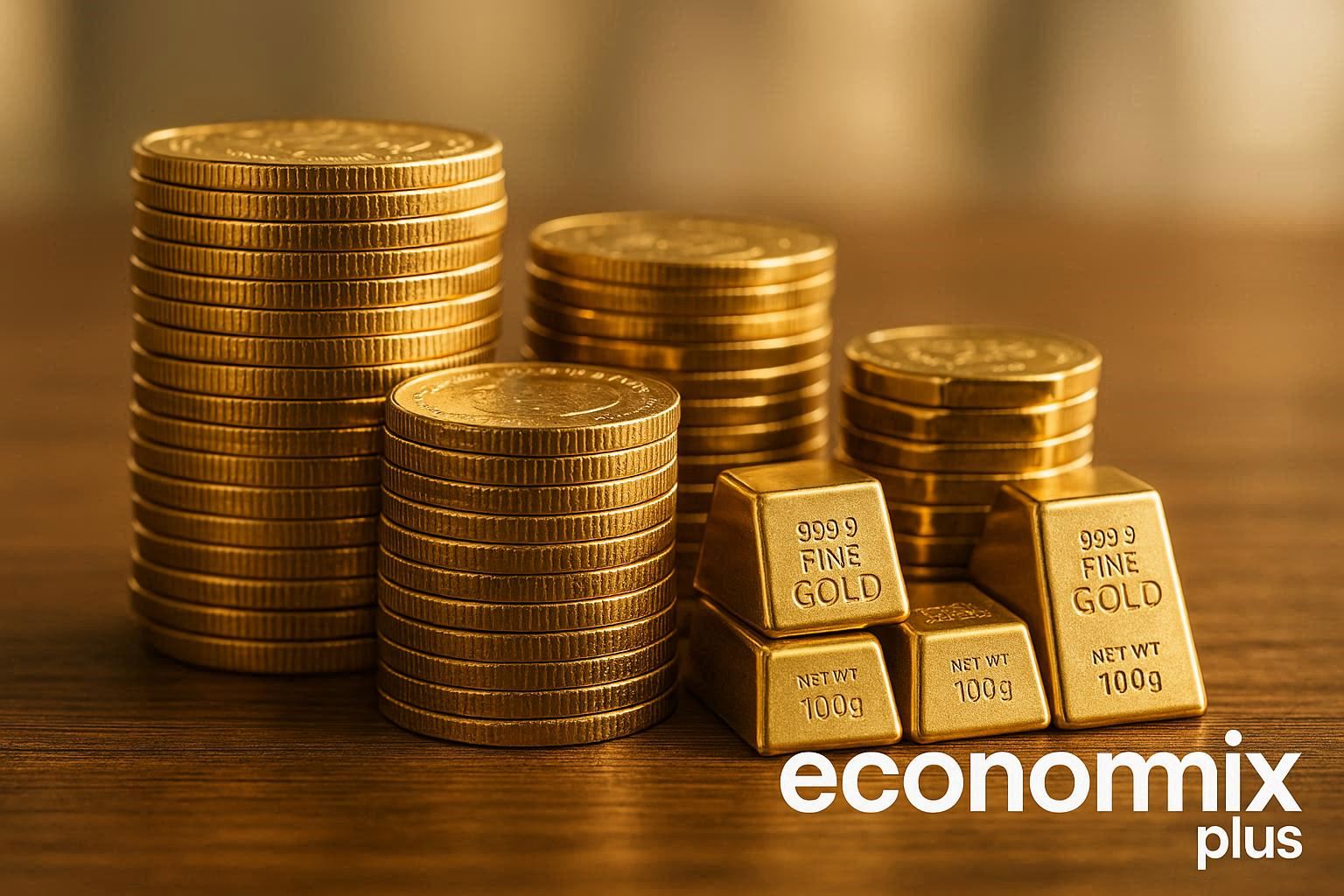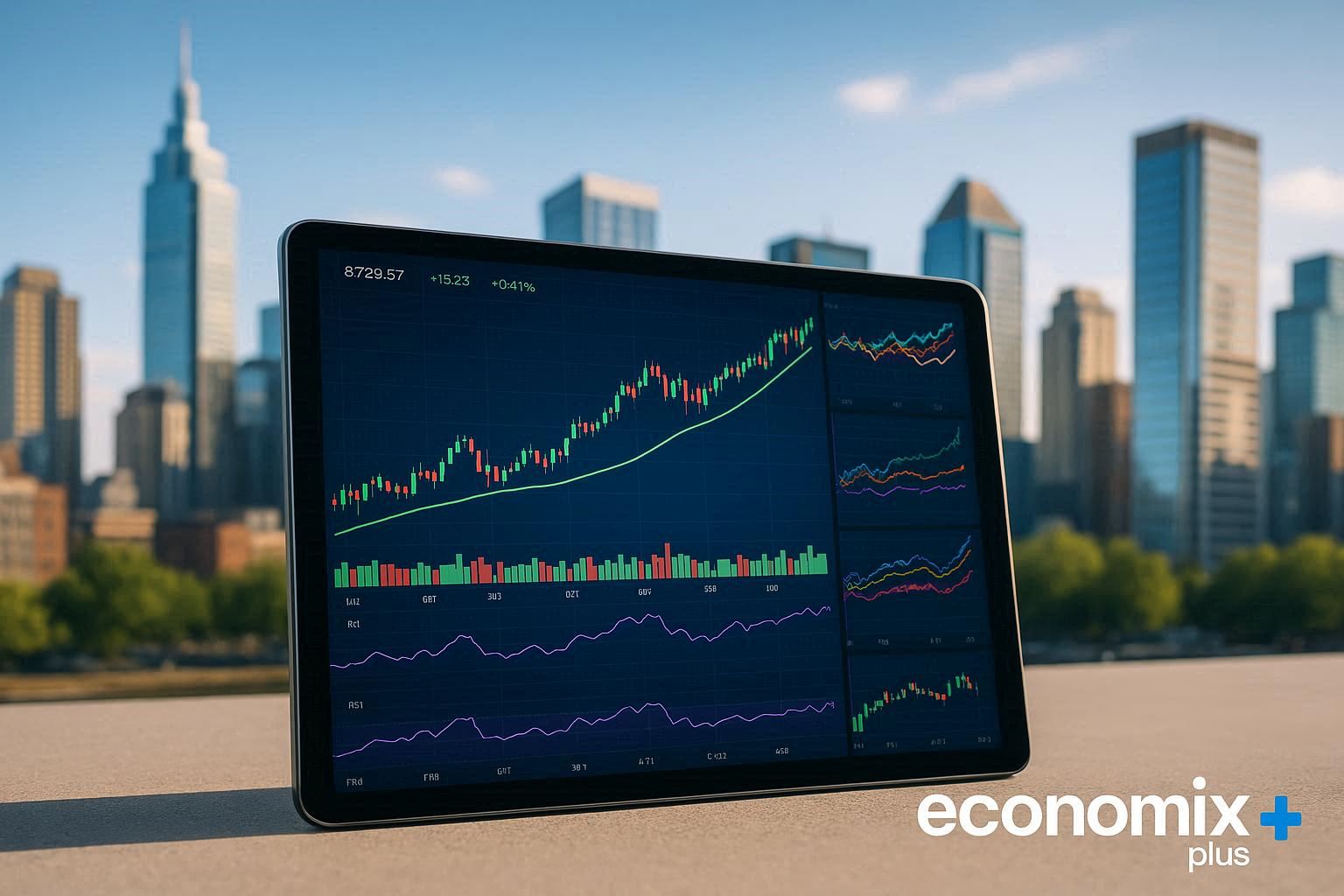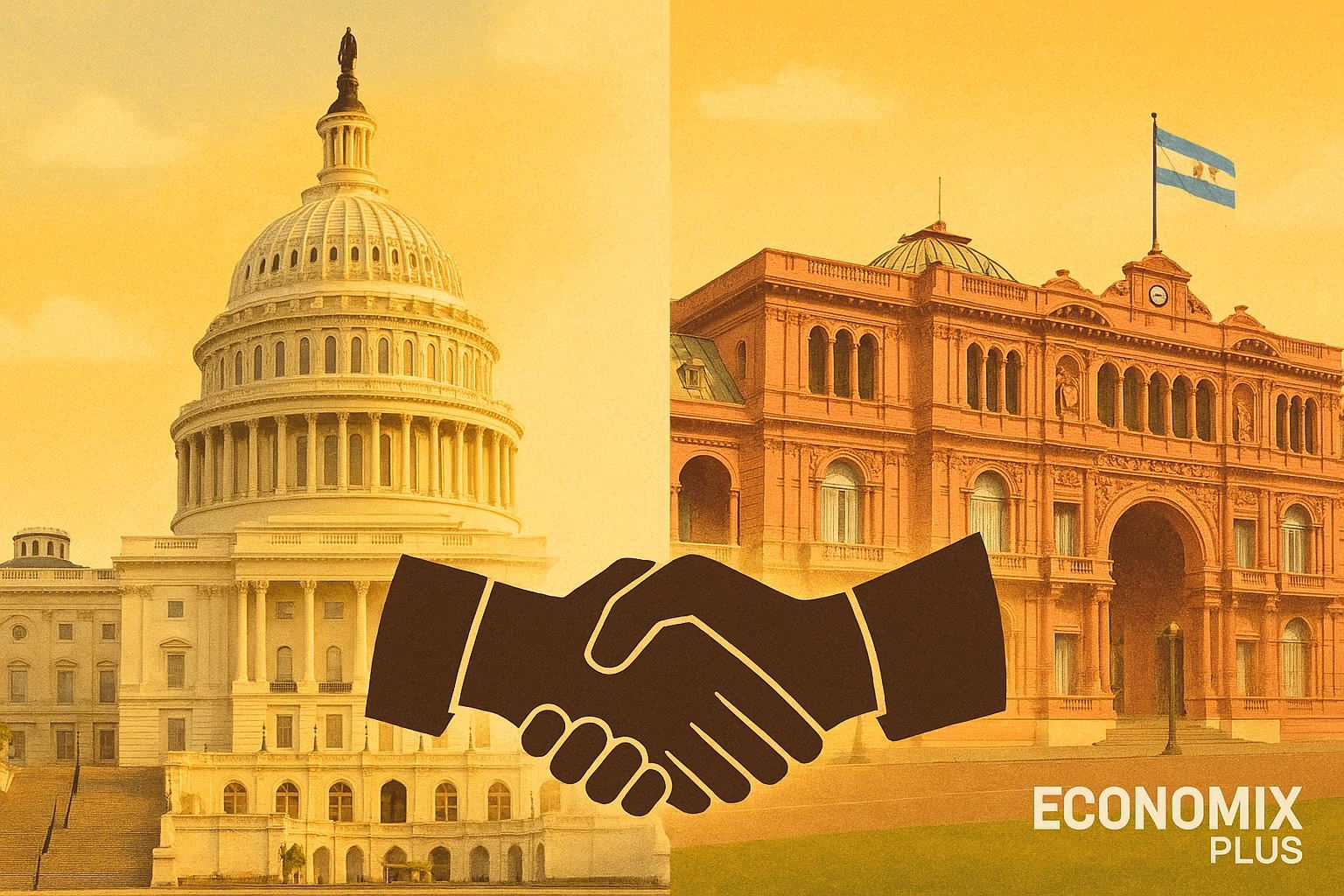Silver has long been a popular choice for those looking to diversify their portfolios. But is it possible to begin your journey into this precious metal with a modest budget? The answer might surprise you.
With modern investment methods, entering the silver market has become more accessible than ever. Whether you’re a seasoned investor or just starting out, silver offers a unique combination of industrial utility and value preservation. This makes it an attractive option for those looking to hedge against inflation.
Starting with a thousand dollars is a realistic goal. This amount allows you to explore various investment avenues, from physical silver to ETFs and mining stocks. Each method has its own set of advantages, making it easier to find one that suits your financial goals.
Understanding the dual role of silver as both an industrial commodity and a financial asset can help you make informed decisions. This knowledge is crucial for maximizing your investment potential and achieving long-term success.
Key Takeaways
- Silver is an accessible entry point for new investors.
- A thousand dollars is a realistic starting amount for portfolio diversification.
- Modern investment methods lower barriers to entry.
- Silver serves as both an industrial commodity and an inflation hedge.
- Key methods include physical silver, ETFs, mining stocks, and futures.
Why Silver is a Smart Investment Choice
The allure of silver lies in its historical significance and modern-day utility. For over 5,000 years, it has served as both a currency and a store of value. Its versatility makes it a standout choice for those looking to diversify their portfolios.
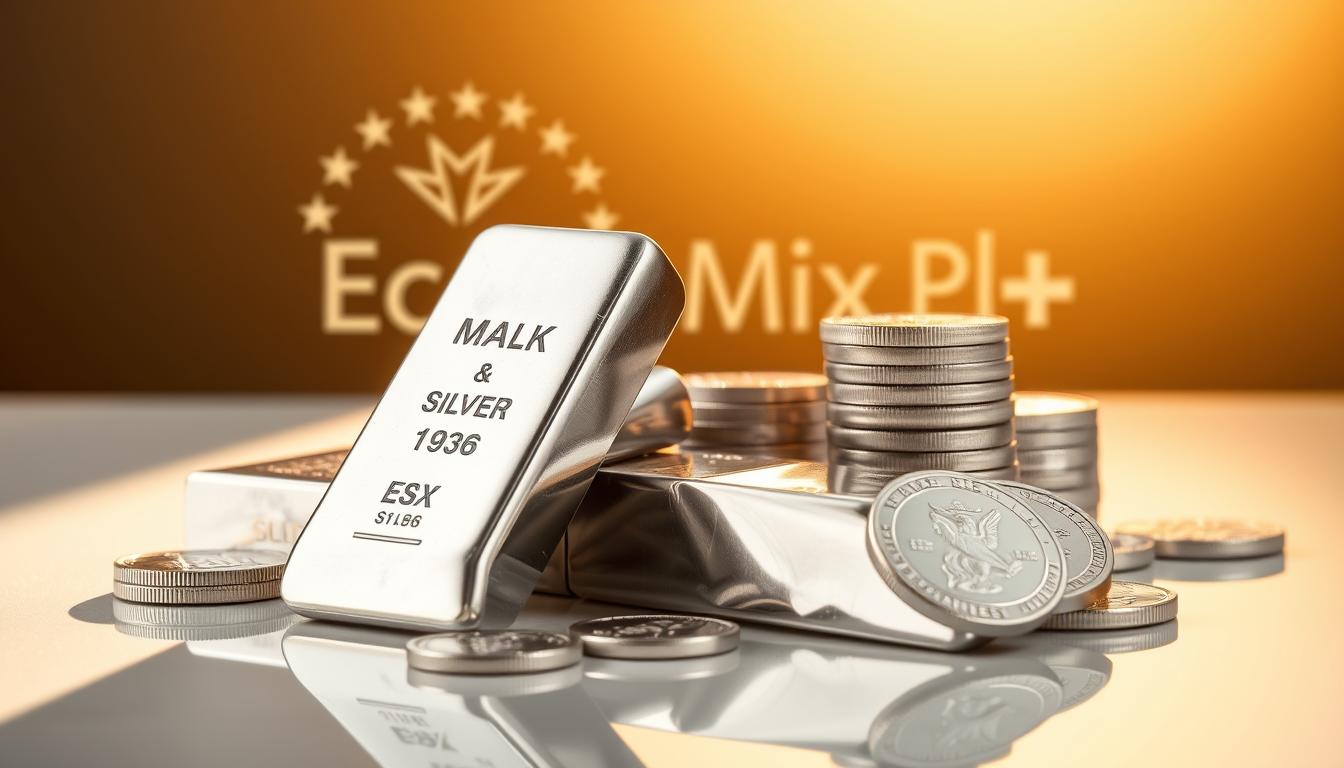
Historical Performance of Silver
Silver has a long track record of resilience. In 1980, it reached a peak of $49.45 per ounce, driven by high demand and market speculation. While prices have fluctuated since then, silver remains a reliable asset. For example, in 2011, it hit £30.06 per ounce, showcasing its potential for growth.
During economic crises, silver often moves inversely to stock markets. This makes it a valuable hedge during downturns. Its dual role as an industrial commodity and financial asset ensures it remains relevant in various market conditions.
Silver as a Hedge Against Inflation
Silver is often compared to gold as a hedge against inflation. While gold is more commonly associated with wealth preservation, silver offers unique advantages. Its industrial demand, particularly in sectors like photovoltaics and electric vehicles, adds another layer of value.
In 2021, industrial demand for silver grew by 13%, driven by its use in solar panels and EV components. This demand is expected to rise, further solidifying its role as a hedge. Additionally, record demand in 2022 saw 25.3% of total consumption come from physical bars and coins, highlighting its appeal to investors.
By understanding silver’s historical performance and its role as an inflation hedge, you can make informed decisions to strengthen your portfolio.
Understanding the Basics of Silver Investment
Silver stands out among precious metals for its unique blend of industrial and financial value. Its exceptional conductivity makes it indispensable in electronics, while its role as a store of value ensures its relevance in uncertain economic times. This dual nature sets it apart from other assets.
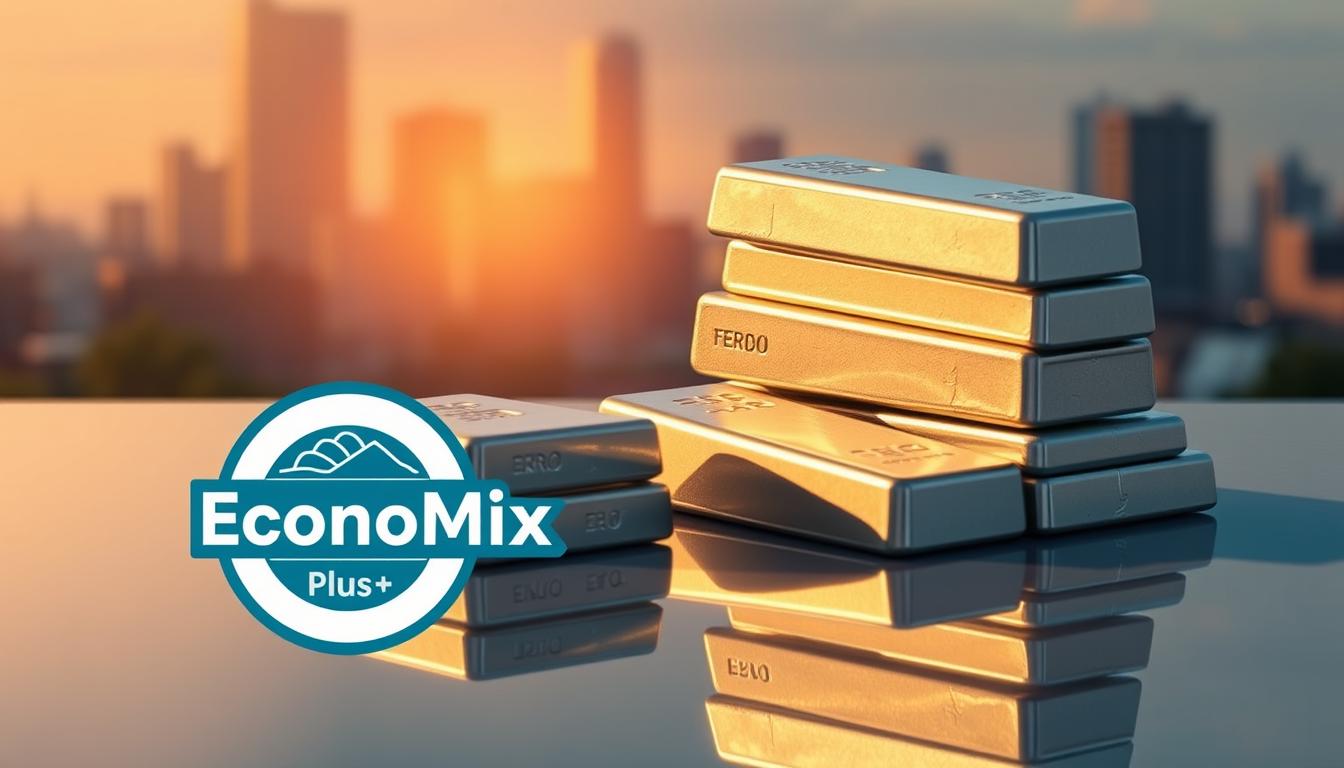
What Makes Silver Unique?
Silver’s industrial utility is unmatched. It conducts electricity better than gold, making it a critical component in electronics, which account for 49% of its demand. Additionally, battery electric vehicles (BEVs) use 25-50 grams of silver per vehicle, highlighting its growing importance in green technology.
Compared to other precious metals, silver is more volatile, with a 3:1 ratio to gold prices. This volatility can offer higher returns but also comes with increased risk. Storage costs also differ; 1,000-ounce bars are cheaper to store than physical coins, making them a practical choice for larger investments.
How Silver Compares to Other Precious Metals
Silver’s price correlation with gold has been 0.63 since 1968, indicating a strong but not identical relationship. While gold is often seen as a pure financial asset, silver’s industrial demand adds another layer of value. This makes it a more versatile investment option.
Tax treatment also varies. In the UK, silver investments are subject to VAT, while in the US, they are treated differently. Understanding these implications can help you make informed decisions and maximize your returns.
By recognizing silver’s unique characteristics and its comparison to other precious metals, you can better appreciate its role as a valuable asset in your portfolio.
Can You Start Investing in Silver with Just One Thousand Dollars?
Entering the world of precious metals doesn’t require a massive budget. With a thousand dollars, you can explore multiple avenues to build a diversified portfolio. This amount provides flexibility, whether you prefer physical assets or financial instruments.
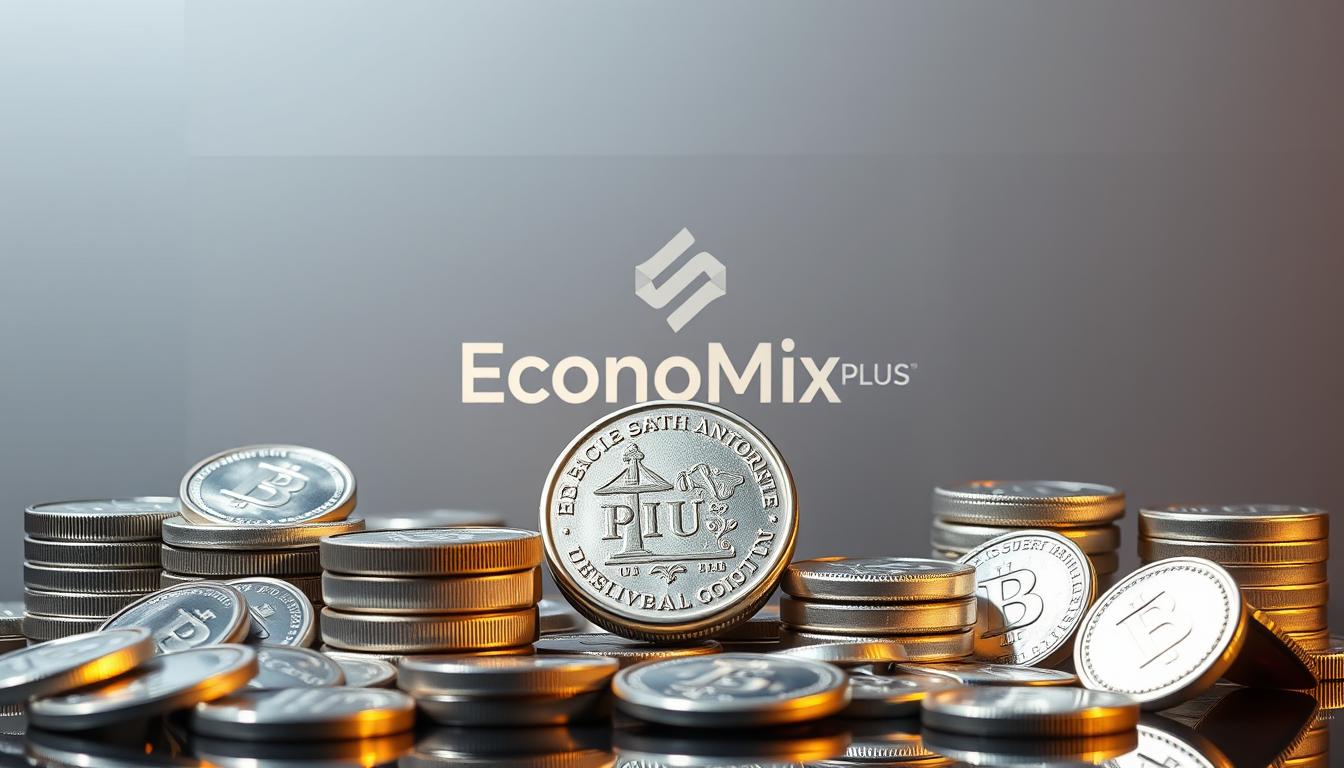
Breaking Down the Initial Investment
Your initial budget can be allocated in various ways. For physical silver, you could purchase 20-35 ounces at current prices. Alternatively, fractional ETF shares allow you to invest without owning full bars. This approach is ideal for those who prefer liquidity and lower storage costs.
Another option is to buy 4-6 positions in mining stocks. These stocks often correlate with silver prices but offer additional growth potential. For micro-investing, platforms like BullionVault allow purchases in 1-gram increments, making it accessible for all investors.
Why $1,000 is a Great Starting Point
Starting with a thousand dollars offers several advantages. It allows you to practice dollar-cost averaging, reducing the impact of market volatility. This strategy involves investing smaller amounts over time, which can lead to more stable returns.
Additionally, this budget provides room to explore different methods. You can compare the benefits of physical bullion versus ETFs or mining stocks. This flexibility helps you identify the approach that aligns with your financial goals.
| Investment Method | What $1,000 Buys | Key Benefits |
|---|---|---|
| Physical Silver | 20-35 ounces | Tangible asset, inflation hedge |
| Silver ETFs | Fractional shares | Liquidity, low storage costs |
| Mining Stocks | 4-6 positions | Growth potential, diversification |
| Micro-Investing | 1-gram increments | Accessibility, flexibility |
Different Ways to Invest in Silver
Exploring silver as an investment opens up a variety of options tailored to different financial goals. Whether you prefer tangible assets or financial instruments, there’s a method that fits your strategy. Let’s dive into the most popular ways to add this precious metal to your portfolio.
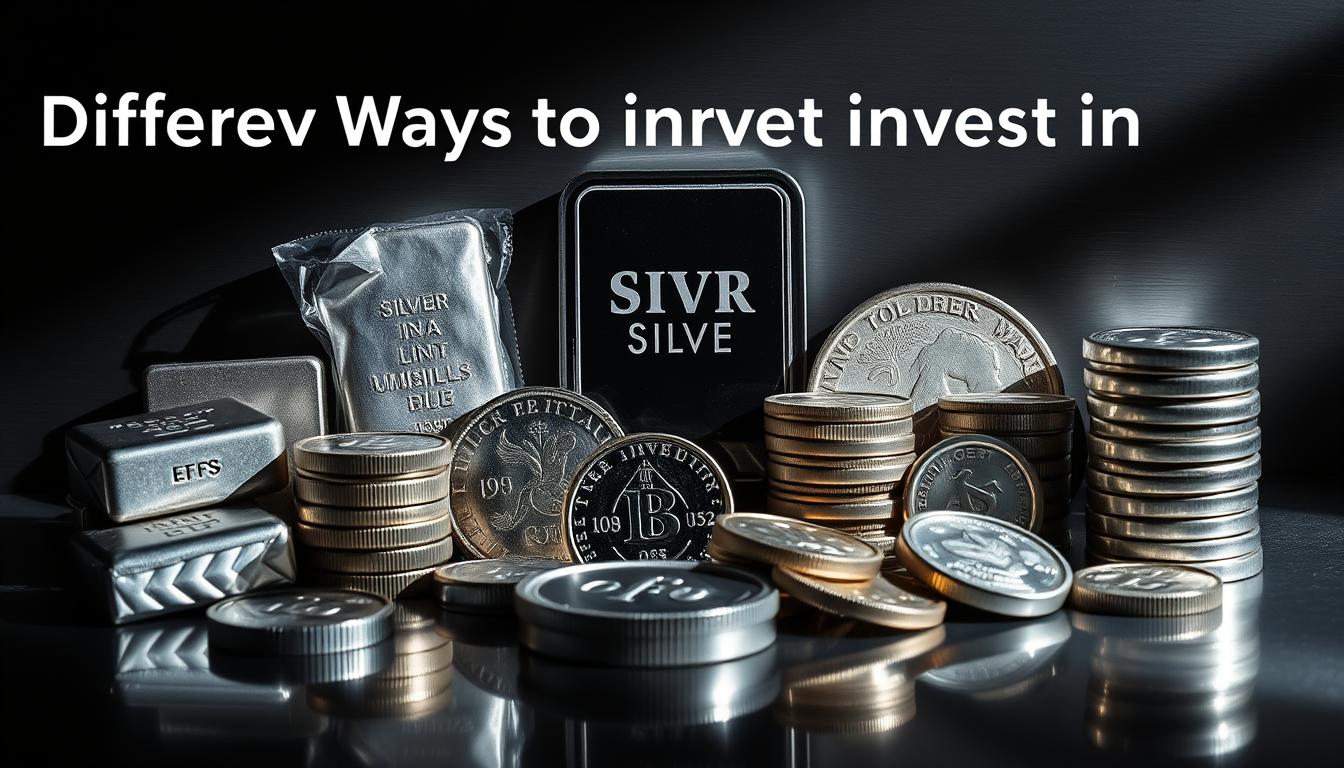
Physical Silver: Coins and Bars
Owning physical silver in the form of coins or bars is a classic choice. These assets are tangible, making them a reliable store of value. Most physical silver products, like those from JM Bullion, meet the 99.9% purity standard.
Storage is a key consideration. Safety deposit boxes can cost $100-$300 annually, but they provide security. Alternatively, home storage offers convenience but requires insurance. Weighing these factors helps you decide the best approach for your investment.
Silver ETFs and Mutual Funds
For those who prefer liquidity, ETFs like the iShares Silver Trust (SLV) are an excellent option. With an expense ratio of 0.50%, SLV offers exposure to physical silver without the need for storage. Unlike physical bullion, ETFs can be traded easily on the stock market.
Mutual funds focusing on silver provide diversification within the sector. These funds often include a mix of physical silver and mining stocks, offering a balanced approach to investing in this precious metal.
Silver Mining Stocks
Investing in mining stocks allows you to capitalize on the growth potential of silver producers. Companies like those in the SILJ ETF focus on junior miners, offering higher risk but also higher rewards. GDXJ, for example, provides a 4.85% dividend yield, unlike physical silver, which generates no income.
Mining stocks are influenced by both silver prices and company performance. This dual exposure can amplify returns but also increases volatility. Researching individual companies is crucial for success in this area.
Silver Futures and Options
For experienced investors, futures contracts offer a way to speculate on silver prices. Each contract represents 5,000 ounces, requiring significant capital and margin. Options provide a more flexible alternative, allowing you to hedge or speculate with less upfront cost.
Both futures and options carry higher risks due to leverage and market volatility. Understanding these instruments thoroughly is essential before diving in.
Benefits of Investing in Silver
Silver offers a unique blend of financial stability and industrial relevance, making it a compelling choice for investors. Its dual role as a precious metal and an industrial commodity provides multiple avenues for growth and protection. Whether you’re looking to diversify your portfolio or preserve wealth, silver stands out as a versatile asset.
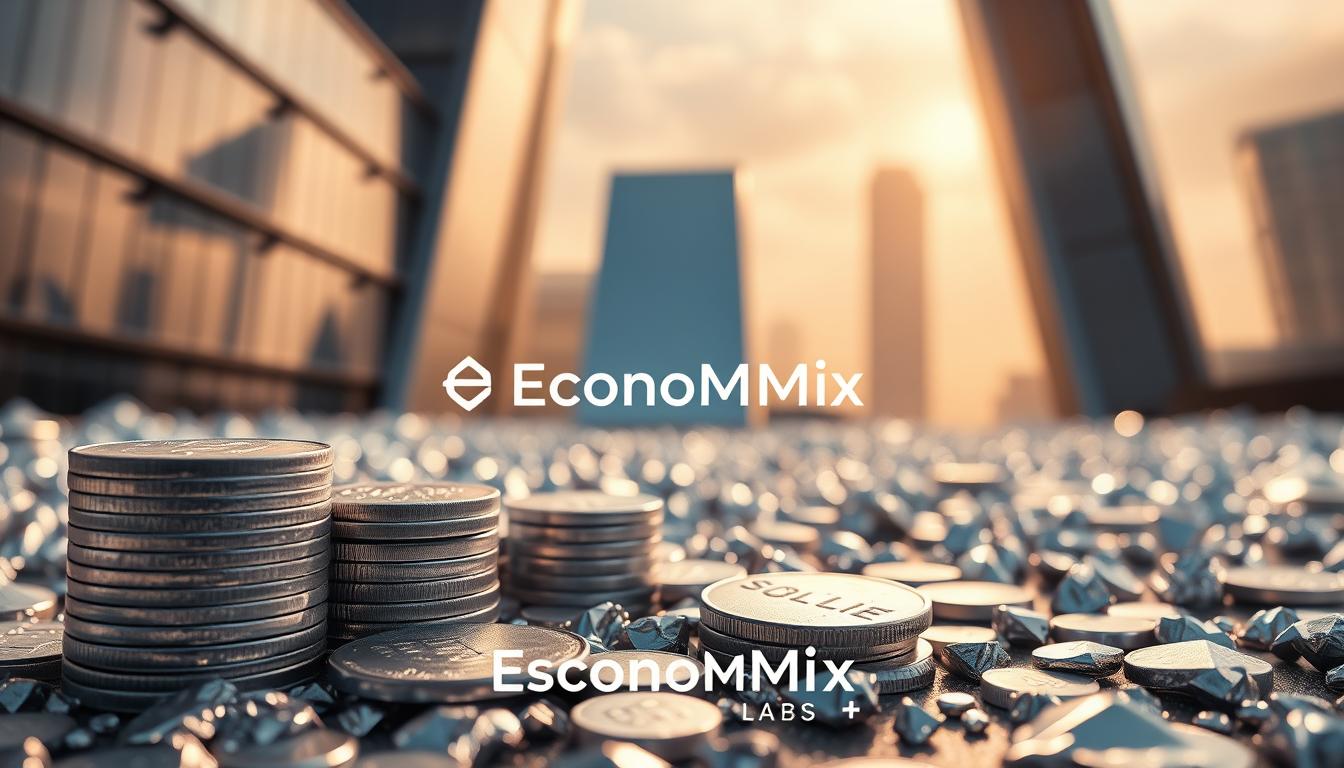
Portfolio Diversification
Adding silver to your portfolio can reduce risk and enhance returns. Over the past decade, silver has shown a -0.32 correlation with the S&P 500, meaning it often moves in the opposite direction of stocks. This makes it an effective hedge during market downturns.
During the 2008 financial crisis, silver surged by 62% while the S&P 500 dropped 38%. This performance highlights its ability to protect wealth during turbulent times. Allocating 5% of your portfolio to silver can provide stability and balance.
Wealth Preservation
Silver has historically been a reliable store of value. In 2011, it delivered a 340% return compared to gold’s 160%, showcasing its potential for significant gains. Its role as an inflation hedge further strengthens its appeal.
For retirement planning, IRA-eligible silver products offer a tax-advantaged way to preserve wealth. These products allow you to invest in physical silver while enjoying the benefits of a retirement account.
Industrial Demand for Silver
Silver’s industrial applications drive consistent demand. It is essential in medical devices, solar panels, and electronics, with annual industrial demand reaching 3,200 tons. This demand ensures its relevance in both financial and industrial markets.
The growing adoption of green technologies, such as solar energy and electric vehicles, further boosts silver’s value. This dual demand makes it a resilient and forward-looking investment.
| Portfolio Allocation Strategy | Benefits |
|---|---|
| 5% Allocation | Balances risk and enhances stability |
| IRA-Eligible Products | Tax advantages for retirement planning |
| Industrial Exposure | Capitalizes on growing demand in green technologies |
Risks of Investing in Silver
While silver offers numerous benefits, it’s essential to understand the potential risks involved. Like any investment, silver comes with its own set of challenges that could impact your returns. Being aware of these risks can help you make more informed decisions and protect your portfolio.
Price Volatility
Silver is known for its price volatility, which can be both an opportunity and a risk. Over a 30-day period, silver’s volatility is around 25%, compared to gold’s 12%. This means prices can swing dramatically in a short time.
For example, during the 2020 COVID crash, silver dropped by 45% in just 10 days. Such fluctuations can lead to significant losses if you’re not prepared. Monitoring the market and setting stop-loss orders can help mitigate this risk.
Storage and Insurance Costs
Owning physical bullion comes with additional expenses. Storage costs for safety deposit boxes range from $100 to $300 annually. Home storage may seem convenient, but it often requires insurance to protect against theft.
Many home insurance policies have limits, typically around $15,000 for precious metals. Exceeding this limit means purchasing additional coverage, which can add to your overall costs. Weighing these expenses is crucial when deciding how much physical silver to own.
Liquidity Concerns
While silver is generally liquid, selling physical assets can be challenging. Dealer buyback spreads for coins range from 8% to 15%, meaning you may not get the full market value when selling. Additionally, counterfeit bars are a concern in secondary markets, making it harder to trust transactions.
Futures contracts also pose risks, as they expire and require careful management. Understanding these pitfalls can help you navigate the market more effectively.
| Risk | Impact | Mitigation Strategy |
|---|---|---|
| Price Volatility | High short-term losses | Set stop-loss orders |
| Storage Costs | Added expenses | Compare storage options |
| Insurance Limits | Inadequate coverage | Purchase additional insurance |
| Liquidity Issues | Lower resale value | Choose reputable dealers |
| Counterfeit Bars | Fraud risk | Verify authenticity |
How to Buy Physical Silver with $1,000
Physical silver offers a tangible way to secure your wealth. With a budget of $1,000, you can acquire a meaningful amount of this precious metal. Whether you prefer coins or bars, understanding your options is key to making a smart investment.
Choosing Between Coins and Bars
Deciding between coins and bars depends on your goals. Coins, like American Eagles, are popular for their collectible value and ease of resale. Bars, on the other hand, often have lower premiums and are ideal for larger investments.
With $1,000, you could buy approximately 25 generic rounds or 18 Eagles. Bars might offer better value, as they typically have lower premiums. Consider your storage options and long-term plans when making this choice.
Finding Reputable Dealers
Working with trusted dealers ensures you get authentic products. Look for companies with high BBB ratings and LBMA affiliations. APMEX and JM Bullion are two well-known options with competitive premiums.
Always verify the dealer’s reputation and read customer reviews. This step minimizes the risk of counterfeit products and ensures a smooth transaction.
Understanding Premiums and Fees
When buying physical silver, premiums and fees can add up. A typical breakdown includes:
- 5% premium over the spot price
- 1% insurance fee
- $25 shipping cost
Additionally, assay certification ensures the authenticity of your purchase. Packaging options, like tubes for coins, may also incur extra costs. Comparing these expenses helps you maximize your $1,000 investment.
| Product | Quantity for $1,000 | Key Considerations |
|---|---|---|
| Generic Rounds | 25 | Lower premiums, easy to sell |
| American Eagles | 18 | Collectible value, higher premiums |
| 1 oz Bars | 20-25 | Lower premiums, bulk storage |
Investing in Silver ETFs with $1,000
Exchange-traded funds (ETFs) provide a flexible way to invest in silver without holding physical assets. These funds track the price of silver, offering exposure to the market without the need for storage or insurance. For investors with a $1,000 budget, silver ETFs are an accessible and cost-effective option.
What are Silver ETFs?
Silver ETFs are financial instruments that track the price of silver. They can be physically-backed, holding actual silver, or futures-based, using contracts to mirror price movements. Physically-backed ETFs, like the iShares Silver Trust (SLV), store silver in vaults, while futures-based ETFs, such as ProShares Ultra Silver (AGQ), rely on derivatives.
These funds offer liquidity, allowing you to buy and sell shares easily on the stock market. They also eliminate the need for storage, making them a convenient choice for many investors.
Top Silver ETFs to Consider
When choosing a silver ETF, consider factors like expense ratios and liquidity. The Aberdeen Standard Physical Silver Shares ETF (SIVR) has an expense ratio of 0.30%, lower than the iShares Silver Trust (SLV) at 0.50%. SIVR is physically-backed, providing direct exposure to silver prices.
Another option is the Sprott Physical Silver Trust (PSLV), with an expense ratio of 0.45%. PSLV is known for its transparency and secure storage. Both funds are highly liquid, with SLV boasting $10 billion in assets under management (AUM).
How to Buy and Sell Silver ETFs
To invest in silver ETFs, you’ll need a brokerage account. Platforms like Robinhood and Fidelity offer commission-free trading, making it easy to get started. Here’s a quick guide:
- Open a brokerage account with a reputable platform.
- Fund your account with your $1,000 budget.
- Search for the desired ETF, such as SLV or SIVR.
- Place your order and monitor your investment.
Remember, silver ETFs are subject to a 28% collectibles tax rate. This is higher than the capital gains tax, so factor it into your decision-making process.
| ETF Type | Example | Expense Ratio | Liquidity |
|---|---|---|---|
| Physically-Backed | SLV | 0.50% | $10B AUM |
| Futures-Based | AGQ | 0.95% | $500M AUM |
| Physically-Backed | SIVR | 0.30% | $1B AUM |
Exploring Silver Mining Stocks
Silver mining stocks offer a unique opportunity to capitalize on the precious metal’s potential. These stocks allow you to gain exposure to silver without owning physical assets. They also provide leverage, often moving twice as much as spot silver prices.
What are Silver Mining Stocks?
Silver mining stocks represent shares in companies that extract and produce silver. These companies range from primary producers, like Pan American Silver (PAAS), to streaming companies, such as Wheaton Precious Metals (WPM). Primary producers focus solely on mining, while streamers provide upfront capital to miners in exchange for future production.
These stocks are highly correlated with silver prices, with an R² value of 0.78. This means they tend to follow the metal’s price movements closely, offering amplified returns during bull markets.
Top Silver Mining Companies
Several companies stand out in the silver mining sector. First Majestic (AG) generates 60% of its revenue from silver, making it a pure play on the metal. Hecla Mining (HL) is another notable name, with a strong focus on cost efficiency. In Q2, Hecla reported a cost of $12.50 per ounce, showcasing its competitive edge.
Streaming companies like Wheaton Precious Metals offer lower risk by diversifying across multiple mining projects. Their business model provides steady cash flow, even during volatile market conditions.
Risks and Rewards of Mining Stocks
Investing in mining stocks comes with both opportunities and challenges. The leverage they offer can lead to significant gains, but it also increases volatility. Political risks, especially in regions like Mexico, can impact operations and profitability.
On the flip side, these stocks provide exposure to silver’s industrial demand and financial appeal. They also offer dividends, unlike physical silver, which generates no income.
| Company | Type | Key Feature |
|---|---|---|
| First Majestic (AG) | Primary Producer | 60% revenue from silver |
| Hecla Mining (HL) | Primary Producer | Low cost per ounce |
| Wheaton Precious Metals (WPM) | Streamer | Diversified cash flow |
Understanding these dynamics can help you make informed decisions when adding silver mining stocks to your portfolio.
Understanding Silver Futures and Options
Silver futures and options provide advanced ways to engage with the precious metal market. These financial instruments allow you to speculate on silver prices without owning physical assets. They are ideal for experienced investors looking to leverage their positions.
What are Silver Futures?
Silver futures are contracts that obligate the buyer to purchase a specific amount of silver at a predetermined price and date. The COMEX contract size is 5,000 ounces, which requires significant capital. Margin requirements for a full contract are around $8,500, making it a high-stakes investment.
Micro contracts, which are 1,000 ounces, offer a more accessible entry point. These smaller contracts reduce the financial burden while still providing exposure to the market.
How to Trade Silver Futures
Trading silver futures involves understanding the market dynamics and managing risks. Rollover costs in contango markets can add up, so it’s essential to plan your trades carefully. Retail traders often face challenges, with statistics showing an 80% loss rate.
To mitigate risks, consider using stop-loss orders and diversifying your portfolio. Tax advantages, such as the 60/40 rule, can also enhance your returns. For more detailed guidance, check out this introduction to trading silver futures.
Risks of Trading Silver Futures
Silver futures are highly volatile, making them risky for inexperienced traders. The leverage they offer can amplify both gains and losses. Additionally, rollover costs and margin requirements can erode profits if not managed properly.
Understanding these risks is crucial for success. Always conduct thorough research and consider consulting with a financial advisor before diving into futures trading.
How to Store Your Silver Investments
Storing your silver investments securely is a critical step in protecting your wealth. Whether you choose home storage or professional vaults, the right solution ensures your asset remains safe and accessible. Let’s explore the options available to investors.
Home Storage vs. Professional Vaults
Home storage offers convenience but requires careful planning. TL-30 safes are a popular choice, providing robust security against theft. Hidden containers, like false walls or floorboards, can also be effective. However, these DIY solutions may lack the advanced security features of professional vaults.
Professional vaults, such as those offered by Brinks, provide unparalleled protection. With costs as low as $0.50 per ounce annually, they are a cost-effective option for larger holdings. These facilities undergo regular audits, including annual and surprise inspections, ensuring your bullion is always secure.
Insurance for Your Silver Holdings
Insurance is essential for safeguarding your silver investments. Most policies cost around 1% of the total value per year. For home storage, check your homeowner’s insurance limits, as they often cap coverage for precious metals. Additional riders may be necessary to fully protect your holdings.
Professional vaults typically include insurance as part of their service. However, it’s important to understand the difference between allocated and unallocated storage. Allocated storage ensures your specific bars or coins are reserved, while unallocated storage pools assets, which can increase risk.
Companies like BullionVault, with over $5 billion in client assets, offer secure and insured storage solutions. Their transparent auditing process provides peace of mind for investors worldwide.
Tax Implications of Silver Investments
Understanding the tax implications of silver investments is crucial for maximizing returns. Whether you own physical assets, ETFs, or mining stocks, being aware of the rules can help you make smarter financial decisions.
Taxes on Physical Silver
Physical silver is subject to a 28% collectibles tax rate for long-term gains. This is higher than the standard capital gains rate, so it’s important to factor it into your planning. Additionally, state sales tax exemptions, like those in Texas, can reduce your overall costs.
When selling physical silver, dealers may require Form 8300 for transactions over $10,000. This ensures compliance with IRS regulations. For retirement planning, IRA-eligible silver products offer tax-advantaged growth under IRS Section 408(m)(3).
Taxes on Silver ETFs and Stocks
Silver ETFs and mining stocks are taxed differently. ETFs generate a 1099-B form for reporting gains, while mining stocks follow standard capital gains rules. Wash sale rules apply to stocks, preventing you from claiming losses if you repurchase within 30 days.
For those looking to defer taxes, a 1031 exchange allows you to swap one investment property for another without immediate tax consequences. This can be a valuable strategy for investors seeking to reallocate their portfolios.
By understanding these tax rules, you can optimize your silver investments and protect your financial future.
Building a Diversified Portfolio with Silver
Incorporating silver into your portfolio offers both security and opportunity. This precious metal provides a hedge against inflation and enhances diversification. By understanding its role, you can optimize your investments for long-term success.
How Much Silver Should You Own?
Financial advisors often recommend allocating 5-10% of your portfolio to silver. This range balances risk and reward, allowing you to benefit from its stability without overexposure. Modern portfolio theory supports this allocation, emphasizing the importance of diversification.
In the 1970s, allocations as high as 20% were common. However, today’s norms suggest a more conservative approach. Rebalancing strategies, such as annual reviews or 5% bands, help maintain this balance. The current gold/silver ratio of 80:1 also provides insights into market trends.
Balancing Silver with Other Investments
Silver complements other assets like stocks and bonds. Its low correlation with traditional markets makes it a valuable addition. A Vanguard study highlights the benefits of commodity diversification, showing improved portfolio performance over time.
Here’s a breakdown of how silver fits into a diversified portfolio:
| Asset Class | Allocation | Role |
|---|---|---|
| Stocks | 50% | Growth |
| Bonds | 30% | Stability |
| Silver | 10% | Diversification |
| Cash | 10% | Liquidity |
“Diversification is the only free lunch in investing.” – Harry Markowitz
By strategically balancing silver with other investments, you can build a resilient portfolio. This approach minimizes risk while maximizing potential returns, ensuring your financial future remains secure.
Long-Term vs. Short-Term Silver Investment
Deciding between long-term and short-term strategies for silver can shape your financial outcomes. Each approach has its own benefits and risks, depending on your goals and market conditions. Understanding these differences helps you make informed decisions that align with your financial plan.
Benefits of Long-Term Holding
Long-term investment in silver offers stability and growth potential. Over the past 20 years, silver has delivered a compound annual growth rate (CAGR) of 8.3%, slightly lower than the S&P 500’s 9.8%. However, its role as a hedge against inflation and economic uncertainty makes it a reliable choice for preserving wealth.
Strategies like dollar-cost averaging can reduce the impact of market volatility. By investing consistently over time, you smooth out prices and build a solid foundation for your portfolio. Additionally, long-term holdings benefit from lower tax rates on capital gains, enhancing your overall returns.
When to Consider Short-Term Trading
Short-term trading suits those who can capitalize on market fluctuations. Swing trading, for example, involves buying and selling silver within weeks or months to profit from price movements. This approach requires a deep understanding of technical indicators, such as the 200-day moving average, to time your trades effectively.
Futures trading is another option for short-term investment. However, it comes with risks like roll yield impacts and margin requirements. Experienced traders often use futures to hedge or speculate, but beginners should approach this method with caution.
Ultimately, the choice between long-term and short-term strategies depends on your risk tolerance and financial goals. By analyzing your options and staying informed, you can maximize the potential of your silver investment.
Common Mistakes to Avoid When Investing in Silver
Navigating the silver market requires awareness of potential pitfalls to maximize returns. Even experienced investors can fall into traps that erode profits or increase risks. By understanding these common mistakes, you can make smarter decisions and protect your investment.
Overpaying for Physical Silver
One of the most frequent errors is overpaying for physical silver. Numismatic coins, valued for their rarity or collectibility, often carry higher premiums than bullion. While they may seem appealing, their prices can be inflated, making them less ideal for pure investment purposes.
Bullion, on the other hand, is priced closer to the spot value of silver. However, even here, premiums can vary widely between dealers. Always compare costs and verify the dealer’s reputation to avoid unnecessary expenses.
Ignoring Market Trends
Failing to analyze market trends can lead to poor timing and missed opportunities. The Commitment of Traders (COT) report is a valuable tool for understanding market sentiment. It provides insights into the positions of commercial and non-commercial traders, helping you anticipate potential price movements.
For example, during the 2021 Reddit silver squeeze, many investors jumped in without considering the broader market dynamics. This led to short-term volatility and losses for those who didn’t plan their exit strategies.
Failing to Diversify
Concentration risk is another common issue, especially when focusing solely on mining stocks. While these stocks can offer significant returns, they are also subject to company-specific risks, such as operational challenges or political instability in mining regions.
Diversifying across physical silver, ETFs, and mining stocks can mitigate these risks. This approach ensures that your portfolio isn’t overly reliant on a single asset class or company.
Additionally, underestimating storage and insurance costs can eat into your returns. Whether you choose home storage or professional vaults, factor in these expenses to avoid surprises. Emotional trading, driven by fear or greed, is another pitfall. Stick to your strategy and avoid impulsive decisions based on short-term market fluctuations.
- Identify numismatic vs. bullion pricing traps.
- Analyze COT report signals for traders.
- Explain concentration risk in mining stocks.
- Highlight storage and insurance cost underestimation.
- Discuss emotional trading pitfalls.
By avoiding these mistakes, you can build a more resilient and profitable silver portfolio. Stay informed, plan carefully, and always prioritize long-term goals over short-term gains.
Conclusion
Building a portfolio with silver is both accessible and rewarding. Starting with a modest budget opens doors to diverse methods, from physical assets to ETFs and mining stocks. Research and risk management are key to navigating this market effectively.
Gradual allocation helps balance your portfolio while leveraging silver’s dual role as a financial asset and industrial commodity. Its growing applications in green technology and electronics make it a forward-looking investment.
For next steps, compare reputable dealers or set up a brokerage account to begin your journey. With careful planning, investors can unlock the potential of silver while safeguarding their financial future.
FAQ
Why is silver considered a smart investment choice?
What makes silver unique compared to other precious metals?
What are the different ways to invest in silver?
What are the benefits of adding silver to your portfolio?
What are the risks of investing in silver?
How do you buy physical silver with
FAQ
Why is silver considered a smart investment choice?
Silver offers a unique blend of industrial and monetary value, making it a versatile asset. It has historically performed well during economic uncertainty and serves as a hedge against inflation.
What makes silver unique compared to other precious metals?
Silver is both a precious metal and an industrial commodity. Its dual role in jewelry, electronics, and renewable energy sectors sets it apart from metals like gold, which are primarily used for wealth preservation.
What are the different ways to invest in silver?
You can invest in physical silver (coins, bars), silver ETFs, mutual funds, mining stocks, or even silver futures and options. Each method has its own benefits and risks.
What are the benefits of adding silver to your portfolio?
Silver helps diversify your investments, preserves wealth during inflation, and benefits from growing industrial demand. It’s a tangible asset that can balance your portfolio.
What are the risks of investing in silver?
Silver prices can be volatile, and storing physical silver may involve costs like insurance. Liquidity can also be a concern, especially with physical holdings.
How do you buy physical silver with $1,000?
Start by choosing between coins and bars, then find reputable dealers. Be mindful of premiums and fees to ensure you get the best value for your investment.
What are silver ETFs, and how do they work?
Silver ETFs (Exchange-Traded Funds) track the price of silver and allow you to invest without owning physical metal. They are traded on stock exchanges, making them a convenient option.
What are silver mining stocks, and how do they differ from physical silver?
Silver mining stocks represent shares in companies that mine silver. Their performance depends on the company’s operations and market conditions, offering potential for higher returns but also greater risks.
What are silver futures, and how do they work?
Silver futures are contracts to buy or sell silver at a predetermined price and date. They are often used by traders to speculate on price movements or hedge against risks.
How should you store your silver investments?
You can store silver at home in a secure safe or use professional vaults for added security. Insurance is recommended to protect your holdings from theft or damage.
What are the tax implications of silver investments?
Physical silver is often subject to capital gains tax, while silver ETFs and stocks may have different tax treatments. Consult a tax professional to understand your obligations.
How much silver should you include in your portfolio?
Experts suggest allocating 5-10% of your portfolio to precious metals like silver. This helps diversify your assets while maintaining a balanced investment strategy.
What are the benefits of long-term silver investments?
Long-term silver investments can provide stability, hedge against inflation, and benefit from industrial demand growth. They are ideal for those looking to preserve wealth over time.
What common mistakes should you avoid when investing in silver?
Avoid overpaying for physical silver, ignoring market trends, and failing to diversify. Research and planning are key to maximizing your returns.
,000?
Why is silver considered a smart investment choice?
Silver offers a unique blend of industrial and monetary value, making it a versatile asset. It has historically performed well during economic uncertainty and serves as a hedge against inflation.
What makes silver unique compared to other precious metals?
Silver is both a precious metal and an industrial commodity. Its dual role in jewelry, electronics, and renewable energy sectors sets it apart from metals like gold, which are primarily used for wealth preservation.
What are the different ways to invest in silver?
You can invest in physical silver (coins, bars), silver ETFs, mutual funds, mining stocks, or even silver futures and options. Each method has its own benefits and risks.
What are the benefits of adding silver to your portfolio?
Silver helps diversify your investments, preserves wealth during inflation, and benefits from growing industrial demand. It’s a tangible asset that can balance your portfolio.
What are the risks of investing in silver?
Silver prices can be volatile, and storing physical silver may involve costs like insurance. Liquidity can also be a concern, especially with physical holdings.
How do you buy physical silver with $1,000?
Start by choosing between coins and bars, then find reputable dealers. Be mindful of premiums and fees to ensure you get the best value for your investment.
What are silver ETFs, and how do they work?
Silver ETFs (Exchange-Traded Funds) track the price of silver and allow you to invest without owning physical metal. They are traded on stock exchanges, making them a convenient option.
What are silver mining stocks, and how do they differ from physical silver?
Silver mining stocks represent shares in companies that mine silver. Their performance depends on the company’s operations and market conditions, offering potential for higher returns but also greater risks.
What are silver futures, and how do they work?
Silver futures are contracts to buy or sell silver at a predetermined price and date. They are often used by traders to speculate on price movements or hedge against risks.
How should you store your silver investments?
You can store silver at home in a secure safe or use professional vaults for added security. Insurance is recommended to protect your holdings from theft or damage.
What are the tax implications of silver investments?
Physical silver is often subject to capital gains tax, while silver ETFs and stocks may have different tax treatments. Consult a tax professional to understand your obligations.
How much silver should you include in your portfolio?
Experts suggest allocating 5-10% of your portfolio to precious metals like silver. This helps diversify your assets while maintaining a balanced investment strategy.
What are the benefits of long-term silver investments?
Long-term silver investments can provide stability, hedge against inflation, and benefit from industrial demand growth. They are ideal for those looking to preserve wealth over time.
What common mistakes should you avoid when investing in silver?
Avoid overpaying for physical silver, ignoring market trends, and failing to diversify. Research and planning are key to maximizing your returns.
